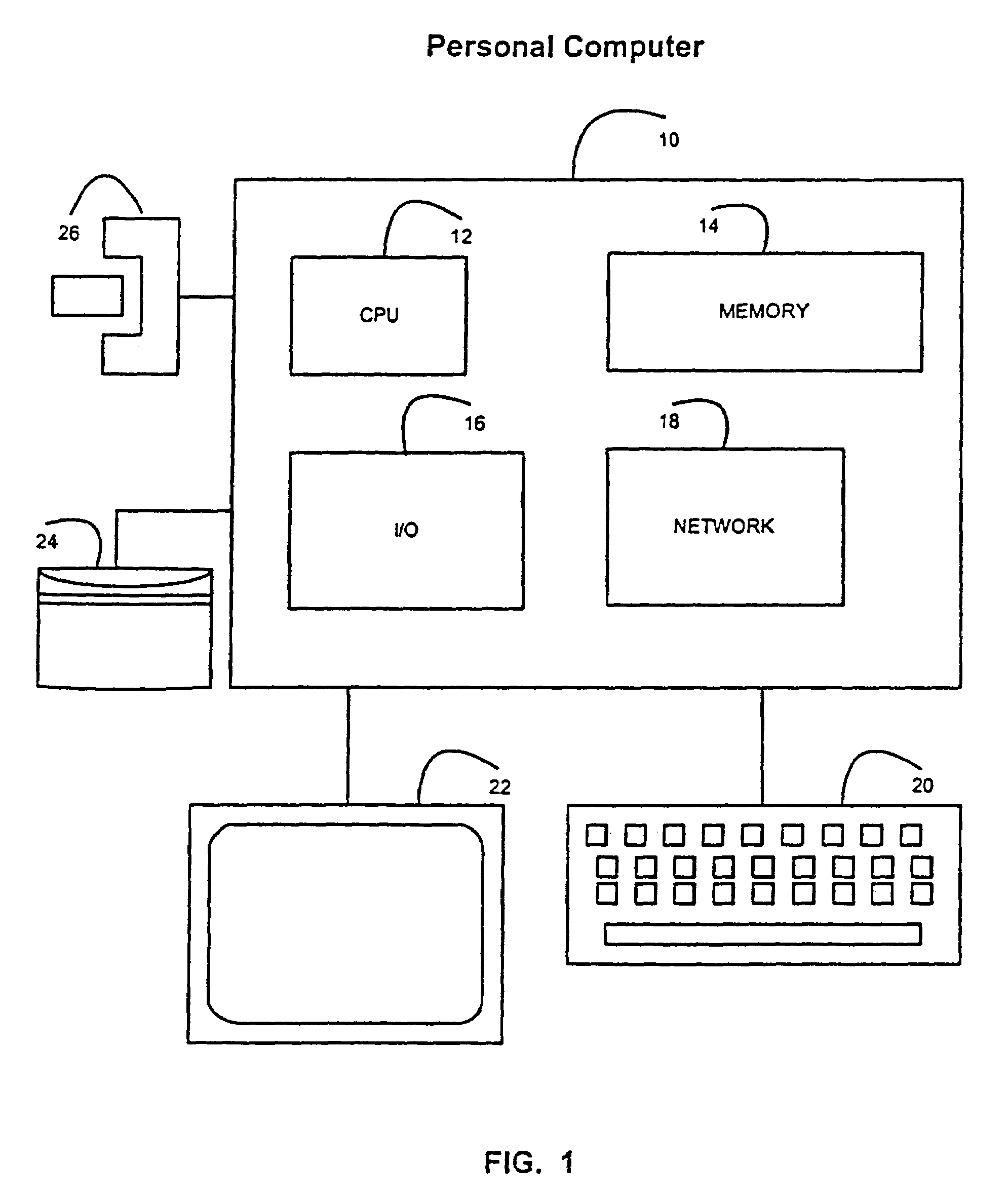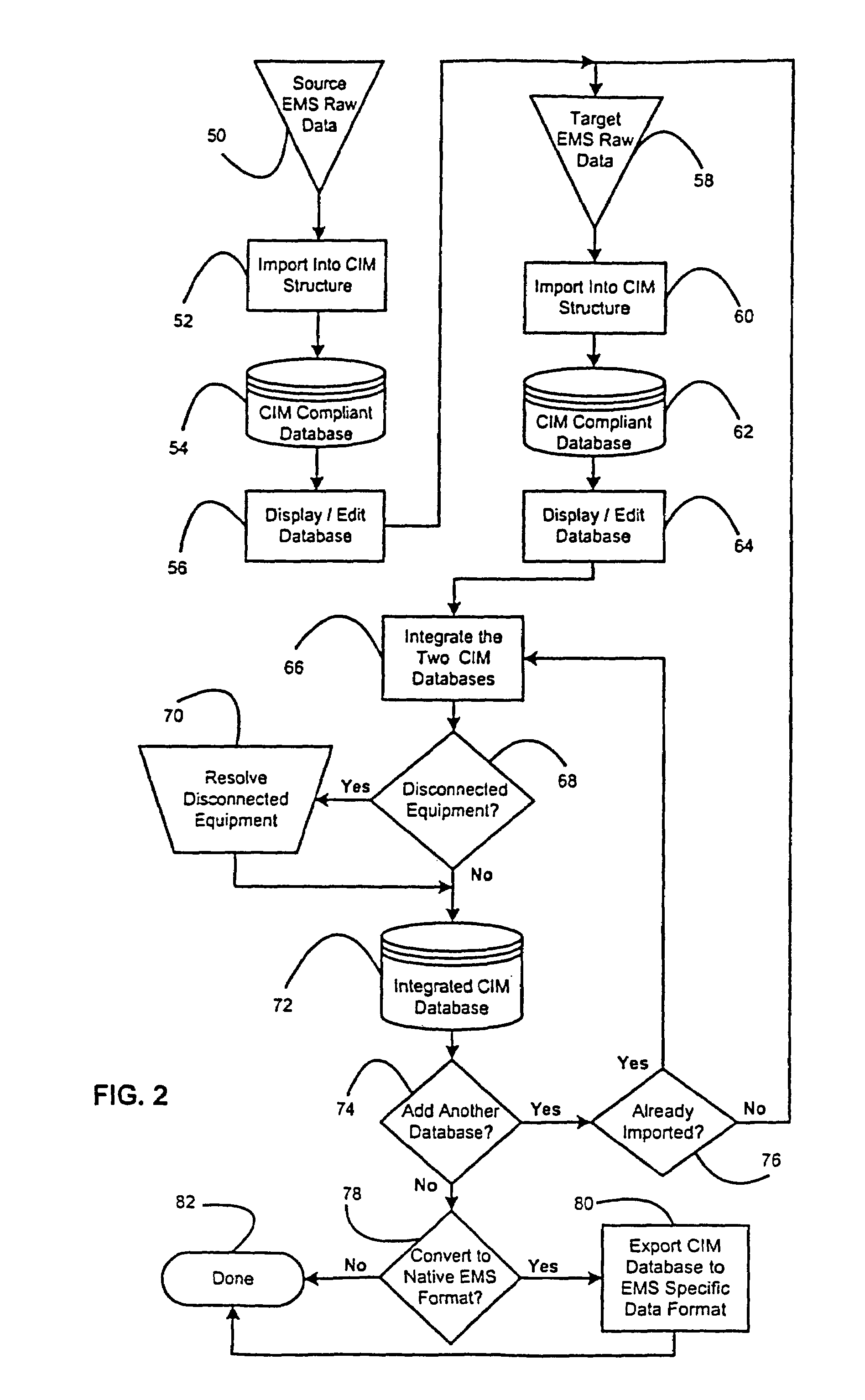System and method for integrating electrical power grid and related data from various proprietary raw data formats into a single maintainable electrically connected database
a technology of electrical power grid and data, applied in the field of sending and receiving electrical system data, can solve the problems of grid reliability and security, limited range and frequency of electrical power transfers, and difficult updating of power system equipment representation, so as to maintain confidentiality of ems-specific data formats, the effect of easy updating
- Summary
- Abstract
- Description
- Claims
- Application Information
AI Technical Summary
Benefits of technology
Problems solved by technology
Method used
Image
Examples
Embodiment Construction
[0095]In FIG. 1, there is shown a block diagram of the internal components of a personal computer 10 upon which the present invention can be practiced. A computer 10 has a central processing unit (CPU) 12. In the preferred embodiment, the CPU is an Intel Pentium microprocessor, although the present invention can be used with other microprocessors as well. A CPU 12 is connected to a Memory 14. A memory 14 is typically the newer Synchronous Dynamic Random Access Memory or the older Dynamic Random Access Memory configured in Single Inline Memory Modules (SIMM). A CPU 12 is also connected to an I / O Controller 16 that is in turn connected to a Keyboard 20 and Display 22. Network 18 interface card is a common addition to many personal computers and is also connected to a CPU 12. Mass Storage Device 24 and removable media device 26 are similarly connected to a CPU 12. The present invention can be implemented on other types of computers besides a computer 10 shown and described in FIG. 1.
Ov...
PUM
 Login to View More
Login to View More Abstract
Description
Claims
Application Information
 Login to View More
Login to View More - R&D
- Intellectual Property
- Life Sciences
- Materials
- Tech Scout
- Unparalleled Data Quality
- Higher Quality Content
- 60% Fewer Hallucinations
Browse by: Latest US Patents, China's latest patents, Technical Efficacy Thesaurus, Application Domain, Technology Topic, Popular Technical Reports.
© 2025 PatSnap. All rights reserved.Legal|Privacy policy|Modern Slavery Act Transparency Statement|Sitemap|About US| Contact US: help@patsnap.com



